Before 1890, relations between Germany and America were fairly calm. Both had been busy at home, but in the last decade of the 19th century, they turned their eyes outward, entering the race for colonies worldwide.1 As they were late entries, there was obviously competition between the two for the remaining pieces of land, and after first clashing in Samoa, the two sides nearly went to war when the Germans showed up off Manila after Dewey's victory there, and made enough of a nuisance of themselves that the Americans on at least two occasions had to put shots across their bows. German hopes of securing the Philippines, or at least a part of them, were thwarted, and they were reduced to buying up the rest of Spain's Pacific Empire after the war ended.
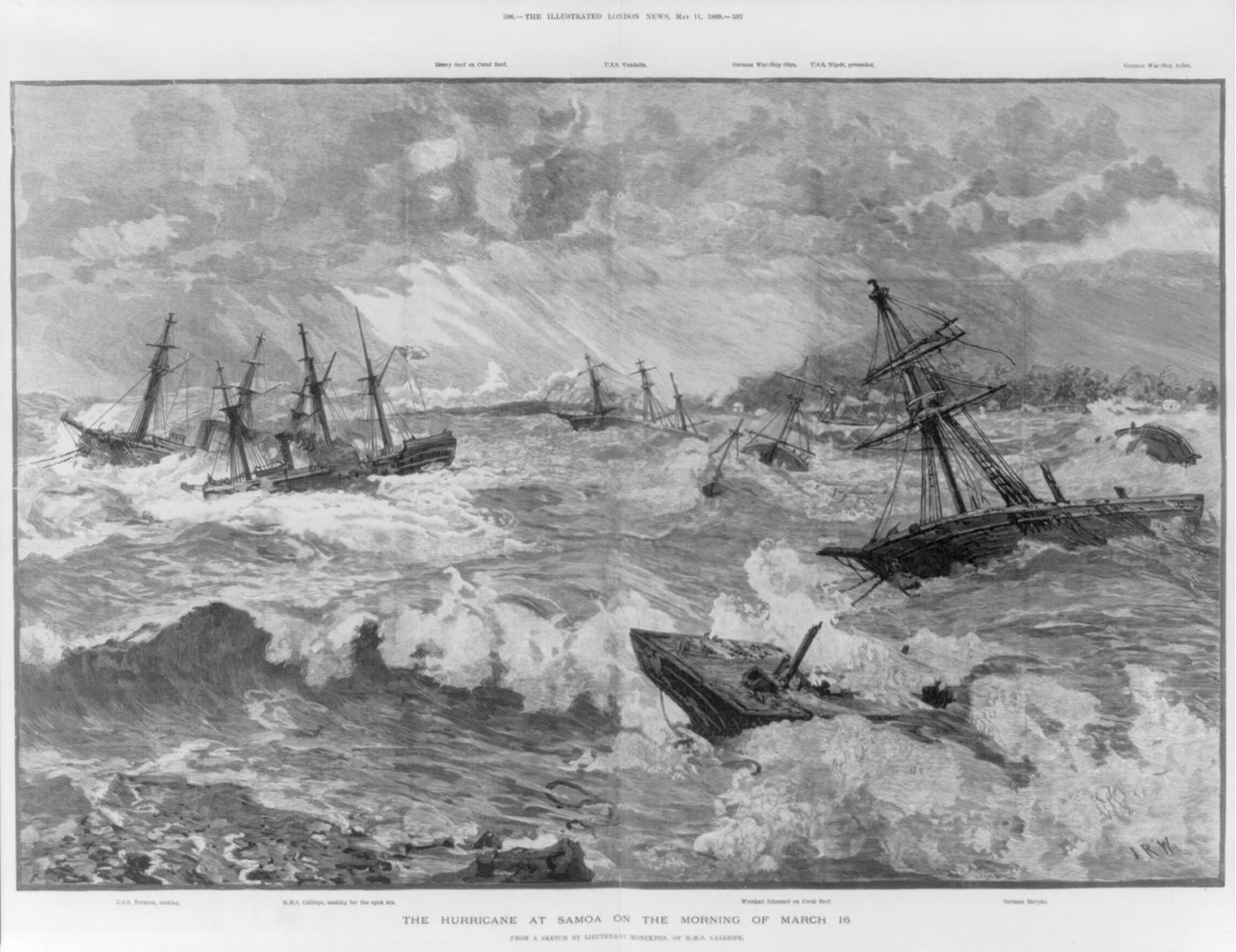
The results of a hurricane at Samoa during the crisis
Many in Germany saw its humiliation in the Far East as the result of an insufficient fleet, and quickly turned the incident into yet another reason to support the naval buildup that Tirpitz had started early in 1898. But there was also the question of how to use said fleet, and that year, a number of junior officers were assigned to write evaluations of various elements of war with the United States. The plan that emerged imagined a battle with the USN to gain control of the sea off the Atlantic coast, followed by a landing to secure the Norfolk area. This would then become a base for a thrust up the Chesapeake towards Baltimore and Washington. For some reason, the plan gave no thought to the difficulties of supplying this force across the Atlantic.
In 1899, the German naval staff continued to refine the plan by making it even crazier. The main target would now be New York, although even the German planners weren't quite ignorant enough of logistics to go straight there. After considering a number of forward bases from Martha's Vinyard to Cape May, they eventually settled on Norfolk due to weather concerns. But the basic plan remained the same. After defeating the USN's fleet in battle, the Germans would blockade Long Island Sound and destroy the forts that guarded New York Harbor from the sea. Once all of this was done, the threat of bombarding New York City would lead to American capitulation. The whole operation should take only a few days, and if ground troops were brought, "2 to 3 battalions [of] infantry and 1 battalion engineers seem fully sufficient".
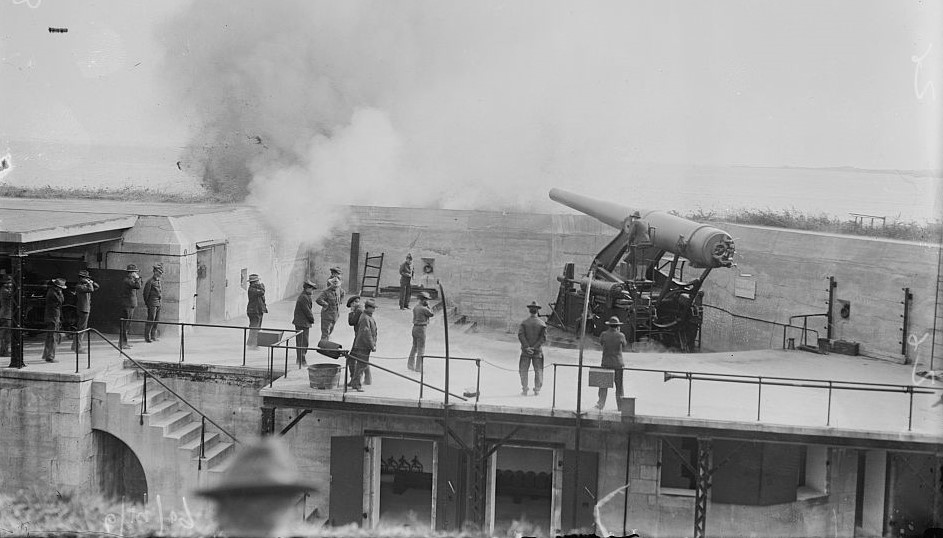
A 10" gun is fired at Fort Hamilton, New York
This was bonkers enough that the commander of German's First (and only) Battle Squadron called the planners on it, and suggested replacing Norfolk as a forward base with "Puerteriko", in the hopes of luring the USN into a battle far from either fleet's base. After Puerto Rico was secured and the main fleet destroyed, Germany's ships would be free to operate against the Eastern seaboard, with plans to capture some combination of Norfolk, Philadelphia, New York City, Boston and Newport, Rhode Island. Hopefully, this would be enough to win the war, although he was somewhat less sanguine about the reaction in the bits of America that were somewhat harder to reach by sea.
But even this ambitious plan was too sensible for the official planners, who decided that New York was indeed the correct target, but that Norfolk wasn't a particularly good base. The German fleet didn't have the range to cross the Atlantic nonstop and arrive in shape to fight, so a stop in the Azores would be necessary. In summer, they would head directly to Frenchman Bay, Maine, which was clearly unsuitable as a winter base. In that case, they would proceed first to Puerto Rico, then after coaling there, make for Long Bay, South Carolina. At either location, they would then spend a day coaling before sortieing for the decisive battle against the USN. The German margin of superiority was narrow enough that even the short-legged Siegfried class coastal defense ships would be brought along, with the more modern battleships towing them most of the way across the Atlantic.
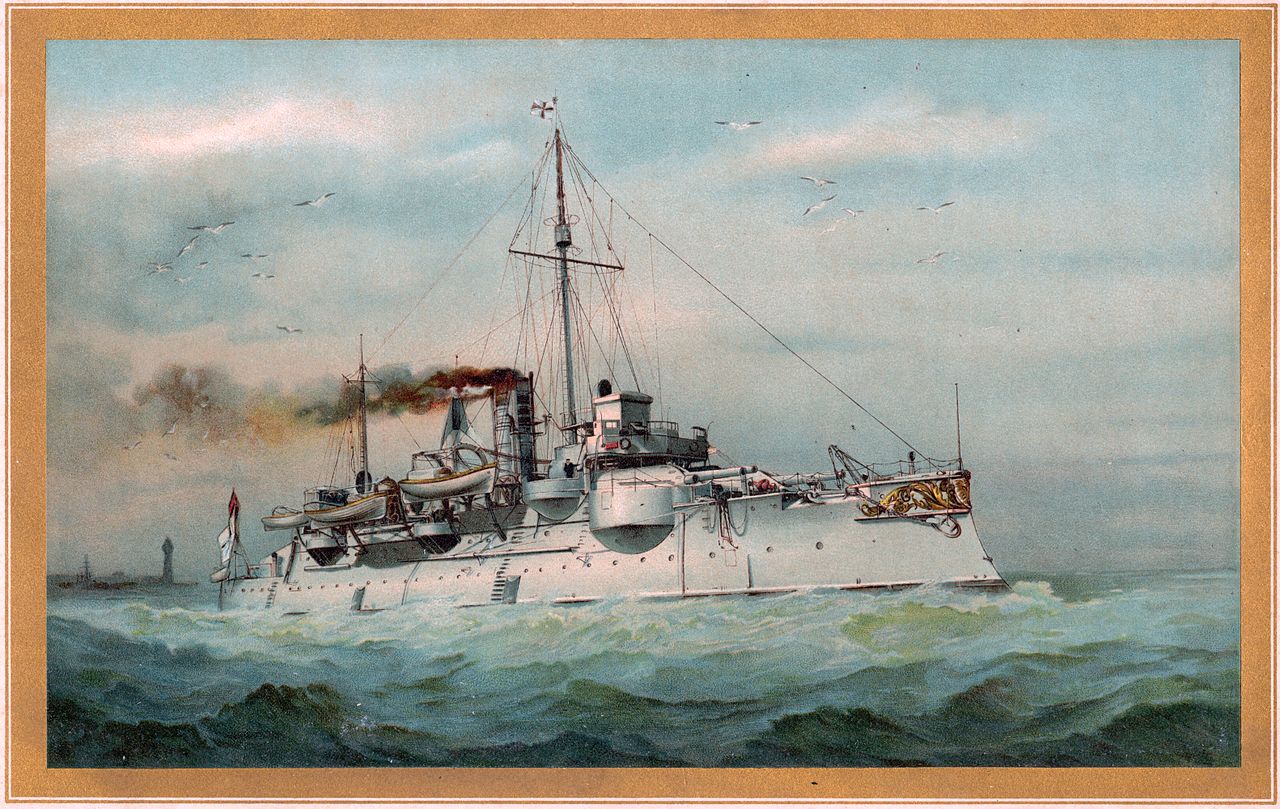
SMS Siegfried
1900 saw the passage of the second Navy Law, which nearly doubled the authorized strength of the fleet, and yet another plan to attack New York and/or Boston, this time with a base at Provincetown on the tip of Cape Cod. This plan was finally presented to someone with both the sense and the authority to inject some sanity into German planning: that bastion of military level-headedness, Kaiser Wilhelm II. He didn't think that a landing at one of the major American cities was possible without a better forward base, and directed the Army to find out how many troops it would take to seize Cuba.
This work was carried out by the Chief of the General Staff, Alfred von Schlieffen, and despite the failure of his eponymous plan in 1914, he was at the very least more sane than anyone else involved, estimating it would take 50,000 to secure Cuba (he refused to study the possibility of attacking Puerto Rico, as the Kaiser had already chosen Cuba) and that 100,000 men would be required to capture the planned base on Cape Cod, although this would probably also be enough to take Boston. More troops would be required if New York City was to be the objective, to say nothing of operations deeper into the US. It was entirely clear that there was no way to transport that many troops across the Atlantic, although a number of officers disputed the conclusion, and the Navy's plan was unofficially published in a book called Operations Upon the Sea, which rather strained German-American relations. But the focus was turning away from a direct invasion and towards acquiring a naval base in the Americas, whether by diplomacy or by force.
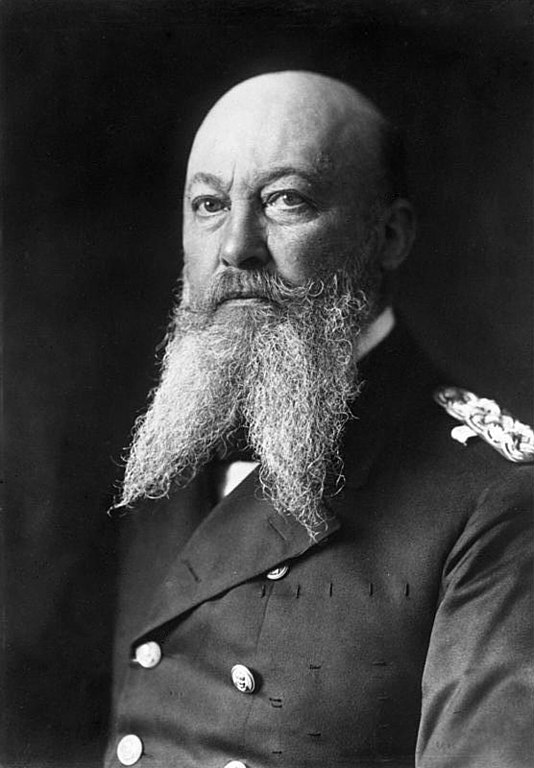
Alfred von Tirpitz
Much of this was driven by Tirpitz's desire for a worldwide network of bases, to allow him to use his shiny new fleet as part of Germany's new Weltpolitik2 and by Germany's increasing engagement in Latin America. Starting in the mid-1890s, Germany sought fleet bases on the Pacific coast of Mexico, among the islands of the Caribbean, and on the coast of Brazil, a country with a large German population and a lot of investment. Germans often speculated openly about securing a colony in Brazil, both as a fleet base and a place to send excess population, which sat rather poorly with the Americans, who had long made opposing European colonialism in the Americas a cornerstone of their foreign policy.
Tensions spiked again in 1902, when Venezuela defaulted on its foreign debt, figuring that the US would protect them from European retaliation. Teddy Roosevelt issued a clarification that the US didn't feel bound to protect other American states from the consequences of their own misconduct, so long as those consequences didn't involve territorial acquisitions by European powers. Germany had a dominant position in trade and investment in Venezuela, and the Kaiser was quick to bring Germany's national honor into play as well. Unfortunately, a focus on the battle fleet meant that Germany didn't have enough suitable ships to enforce a blockade on its own, or even with the help of Italy, who was also interested in participating. Only the RN's cruiser fleet was large enough for the job, and the British were reluctant to come in, taking months to agree to the plan.
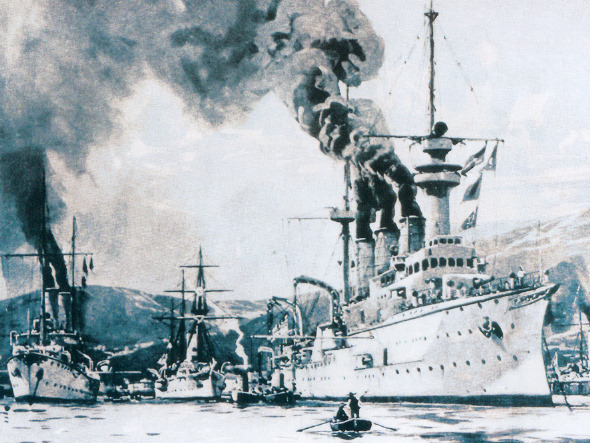
The blockade of Venezuela
The blockade itself went smoothly enough, with the three navies easily stopping trade to Venezuela, and leveling several forts by bombardment. But it did nothing to reduce trans-Atlantic naval tensions. Roosevelt, wary of German intentions and seeking an opportunity to flex the fleet that the US had been building, ordered Dewey to Puerto Rico with 54 ships, the largest fleet the US had ever operated under a single commander. Even the submission of the Venezuela dispute to arbitration at the Hague left both the US and Germany still convinced that the other one was their main enemy. The effect was biggest in the US, where Congress authorized five new battleships and various supporters of a bigger navy founded the Navy League, consciously modeled on the organization that Tirpitz had set up to build support for his naval expansion.
The crisis prompted German planners to take another look at the possibility of war with America, this time finally considering the broader political dimensions of the problem. It was instantly clear that any opposition in Europe would make operations in the Americas infeasible, as ships and men would be needed closer to home. They also realized that even as limited an objective as the successful occupation of Puerto Rico could be quite valuable to Germany, bringing with it both a base in the Caribbean and the destruction of the Monroe Doctrine, which in turn would give Germany a free hand to exploit Latin America. Capturing Puerto Rico was expected to require 12 battalions of infantry and supporting forces, a total of 12,000 men. This was based on the force Germany had sent to help put down the Boxer Rebellion a few years earlier, leaving little question that it could be safely transported across the Atlantic, although the difficulties of actually landing them were not dealt with, nor was the problem of supporting a force in the Caribbean over an extended period. Abandoned was any scheme to actually attack New York, although the planners did contemplate a landing on eastern Long Island to threaten the city and bring America to the negotiating table.
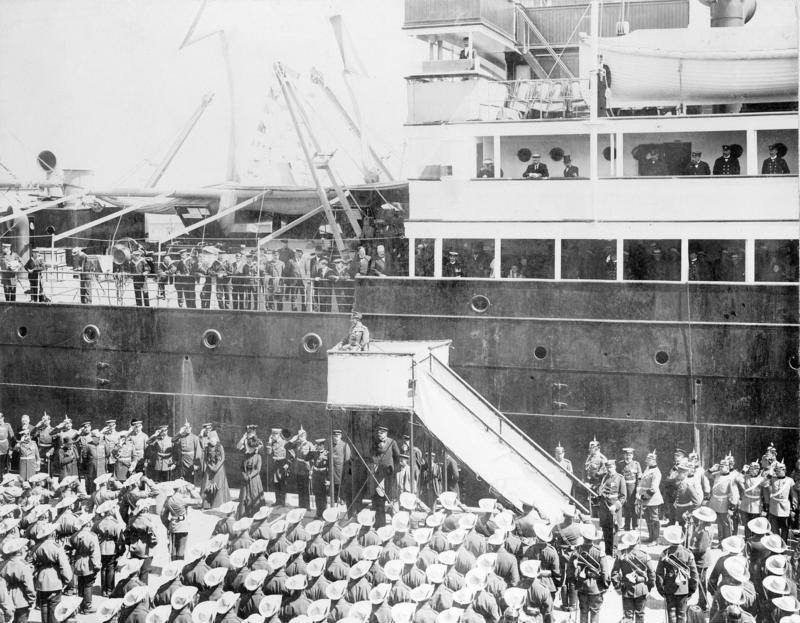
The Boxer expeditionary force readies for departure
But all of this was soon overtaken by a major shift in European politics. 1904 saw the Entente Cordiale between France and Britain, ending the longest-running rivalry in European politics and bringing Britain into alignment against Germany. With only Austria firmly on their side, the odds of Germany being able to operate freely in the Americas were slim. The arrival of the Dreadnought further undermined Tirpitz's fleet, and in 1906, the plan for war against the US included the requirement that Britain be a German ally, essentially killing the whole scheme. German policy would have to be directed closer to home for the next decade.
But it is worth thinking about what might have happened if Germany had achieved its goal of getting a major base in American waters before WWI. The East Asia Squadron posed a major problem for the Allies on the outbreak of war, mitigated by the quick capture of Tsingtau by the Japanese and the resulting lack of any suitable base. A base in the Americas, particularly somewhere in Brazil or Argentina, would have been much more difficult for the Allies to deal with, and might have given Spee and his counterpart in the South American Squadron the ability to terrorize British trade for considerably longer than they actually did, with a significant impact on the balance of power in the North Sea.

Comments
Bad German planning goes back farther than I thought.
"For some reason, the plan gave no thought to the difficulties of supplying this force across the Atlantic."
"It's just like a river crossing - how hard could it be?" - the head of the German planning staff, probably
...That is, without a doubt, the most flat-out insane military plan I've ever seen.
Mike, I know that's not true. But it is the most flat-out insane plan I've ever seen that was put together by an actual military and not a crazed denizen of an internet forum.
Shouldn't there be something about the Danish Caribbean colonies? Weren't both sides trying to snap them up?
Yeah, I think that just sort of fell through the cracks. The book I was working from was very naval-focused, and while it did mention that, it was fairly offhand, and I didn't catch it when writing this.
I assume that the invention of popcorn happened shortly after the Kaiser told the Army to evaluate the Navy's plan.
(Insane idea: if interservice relations stayed sour into WW1, is it plausible that the initial Dolchstoss claim referred to the Navy stabbing the Army in the back? "Those incompetent bastards get to sit out the war in port, lose the very few battles they fight, and then mutiny when told to fight another battle.")
I would point out that as crazy as these schemes seem, the USN was planning on the assumption that the germans (among others) were contemplating things on similar lines.
Even if it is insane and has no chance of working if your enemy may do it then you'd be better off if you were ready for them.
Spam alert...
my point was that the USN didn't consider such gambits to be insane.
The plan is to sail across the Atlantic Ocean (3000 miles, more or less), with at max 100k men, no significant logistical support and take over a country with a Gross GDP roughly 30% higher than your own, a population 50% larger than your own and a land mass 3000 miles wide (with the country being largely self sufficient in everything it needs to fight a war).
And somebody thought it would work....
I don't think the plan was to take over the entire United States. At most they planned to take over NYC and maybe a few other East Coast ports, then negotiate a peace treaty on favorable terms. 100k men wouldn't be an absurd force level to accomplish that against the US Army of ~1900, but as you note logistical support would have been a serious issue.
Wouldn't that require that the US not decide to just go in and retake them from those who didn't have enough supplies to hold out if that happened?
Worth pointing out that Germany's most recent example of a war at this point was the Franco-Prussian War, which had been a swift victory after the fall of the enemy's major city. They seem to have thought that would happen again. Of course, the problem with that is that a lot of Americans are here because we got kicked out of our previous country for being ornery. We'd retake New York even if the Germans were well-supplied.
One thing to remember is that pre-1898 Puerto Rico was not American, so in 1890 picking off a Caribbean colony from Spain (or the Dutch) would have been (slightly) more feasible.
I think another other part of it (in addition to Bean's excellent point about the Franco-Prussian War) is that war and the world at large (at least in 1890, less so in 1910) were both modern and pre-modern. You have steamships, rifled cannons, machine guns, etc., but also very limited or non-existent radio communications, rail centered lines of communication, no radar, etc. That makes a Pearl Harbor type strike out of the blue more difficult to coordinate, but also more likely to succeed because the opponents have a harder time detecting it or coordinating a response.
Also, the logistics and manufacturing of the era were both more resilient (in the sense that draft was less of an issue, equipment was not as specialized, ships were more plentiful, etc.) and more limited (insofar as rail was more sensitive to disruption, re-packaging material required a lot of manual effort, lot sizes were quite small, etc.), so if they can take the Port of New York and strike a blow in the Chesapeake, they're not in a terrible position. Probably a doomed one in the long run, because of the logistical difficulties and the ability of the Americans to coordinate forces overland, but not terrible in the short run.
But beyond the tactical lunacy or lack thereof, I think the bigger question is 'why?' Unless it was just a paper exercise to get the planners thinking outside the box, it seems totally backward strategically. Long-term territorial concessions from the mainland US seem unlikely given the balance of resources and logistical difficulties, and for anything else (seizing US colonies, getting the US to not enforce the Monroe doctrine against German would-be colonies in the Americas or Philippines) it seems like Germany would be opening another front against the US to no avail, while increasing vulnerability to closer to home rivals such as France, Russia, and the UK. Perhaps it's a long-shot bet for an earlier Pearl Harbor (Germany strikes New York to ensure they can keep Venezuela or Spanish Puerto Rico), but even then it seems like a more complete capture of Puerto Rico and building out a base there would have been a better use of resources than pre-emptively striking New York.
Puerto Rico didn't enter the picture until 1899, after it was an American possession. I think there was a tiny bit of speculation about grabbing someone else's colonies, but the problem is that that sets off a war in Europe, which might be a problem if your fleet is in the Americas.
As for why, this is Imperial Germany. It was paranoid and generally used aggression as a substitute for strategic thought. And the US was the only really credible rival for the German Navy at the time, giving Tirpitz an excuse to request more ships. But yeah, the stated objective was repeal of the Monroe Doctrine, probably with a big war indemnity, like they got from France in 1870.
In fairness, as an answer to the very narrow question, "Assume we find ourself at war with America, our fleet is superior to hers, and no one else is on either side. How should we bring the war to a successful conclusion?"
"Land 10 divisions to secure Long Island and, ideally, the Hudson Estuary before the US Army can put its pants on." is perfectly reasonable.